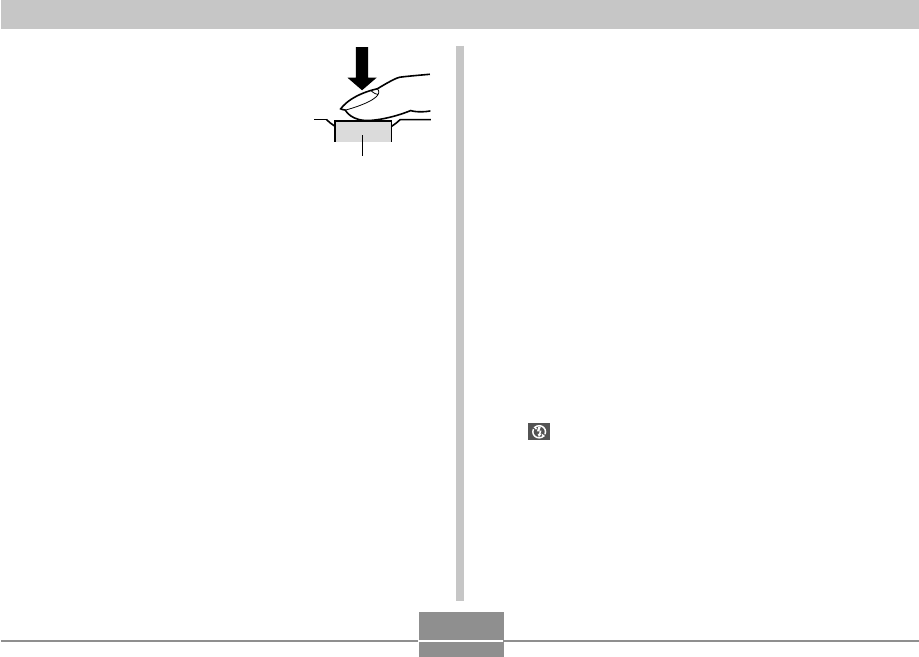
40
BASIC IMAGE RECORDING
Recording Precautions
• Never open the battery cover while the green operation
lamp is flashing. Doing so not only causes the current im-
age to be lost, it can also corrupt images already stored in
camera memory and even lead to malfunction of the cam-
era.
• Never remove the memory card while an image is being
recorded to the memory card.
• Fluorescent lighting actually flickers at a frequency that
cannot be detected by the human eye. When using the
camera indoors under such lighting, you may experience
some brightness or color problems with recorded images.
• The camera automatically adjusts its sensitivity in accor-
dance with the brightness of the subject. This can cause
some static noise to appear in images of relatively dark
subjects.
• For a dimly lit subject, the camera raises the sensitivity and
uses a faster shutter speed. Because of this, you need to
guard against camera movement if you have flash turned
off ( ) when recording a dimly lit subject (page 46).
5.
After making sure that the
image is focused properly,
press the shutter release
button the rest of the way
down to record.
• The recorded image is stored
temporarily into buffer memory.
After that, it is saved in the
camera’s built-in flash memory or
onto a memory card, if one is
loaded in the camera. You can
record consecutive Continuous
Shutter images as long as there
is still buffer memory available to
store them.
• The number of images that can be stored in memory
depends on the resolution setting you are using (page
140).
• Press the shutter release button gently to avoid cam-
era movement.
Shutter release
button


















